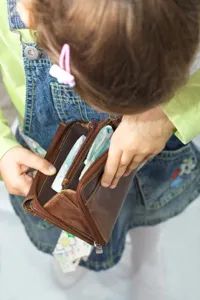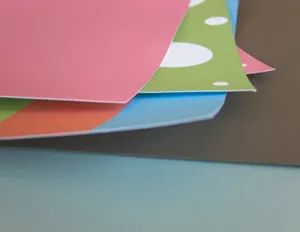
There are many free or inexpensive online resources, links, and do-it-yourself guides to help bring some of Maria Montessori’s profound wisdom into your home.
The Age of Montessori website is one such resource providing a wealth of information through complimentary “white papers”, newsletters, and webinars. Their information rich archives can be accessed here: ageofmontessori.org/resources/. Depending on your interest, try going to the Four Avenues series of blogs by trainer Mary Ellen Maunz. The four avenues are: Practical Life, Sensorial, Language and Math.
Additionally, there are many websites, such as Monthome.com, or Montessori by Hand which provide instructions for making your own Montessori materials or purchasing them inexpensively.
Today's DIY Montessori material: flashcards with sandpaper letters. Sandpaper letters are very useful tools for teaching young children letter shapes and sounds, and to prepare little hands for writing. (For more information on using teaching tools, click here.) It is easy and inexpensive to make your own sandpaper letters.
1) First, gather the necessary supplies:
- 7 sheets of colorful 8½ x 11 inch cardstock

- 7 sheets of 9 x 11 inch, fine-grit sandpaper
- Stencils of each letter of the alphabet, preferably in a font similar to what your child’s school is using. Age of Montessori recommends using lower case print letters for ease of application to reading print. You can download printable stencils free at many online sites such as http://freealphabetstencils.com/
- Craft knife
- Craft glue

2) Next, using standard 8½ x 11 inch cardstock, cut each sheet into 4 equal (4¼ x 5½) sized cards. Make 26 cards.
3) Using your stencils and craft knife, carefully cut each letter out of the sandpaper. The letters should be large, approximately
3 x 4 inches. Note: cut on a thick piece of cardboard, old magazine, or unused phone book. It may help to tape the stencils in place
before you start cutting.
4) Glue one letter per card and let dry thoroughly.
5) Let kids trace the grainy letters with their fingers while speaking the sound of the letter out loud. This tool makes use of sight, texture, and sound to familiarize children with the alphabet.

6) Optional: make separate sets of cards to introduce both upper and lower case letters. Teach lower case first, keeping in mind that capital letters are used in special cases, such as proper nouns and the first word of a sentence.
When you teach them, remember to teach the sounds the letters make rather than their names. This is the information your child will need to immediately apply in both writing and reading. (Again, refer to this informative webinar for more information on this important topic.)
Perhaps you are just not that crafty or simply don’t have the time. Sandpaper cards can be purchased inexpensively, online at sites such as: Montessori Services or Sandpaper cards on Amazon.
"1. The principal quality of my material is to attract the attention of the child and to provoke a permanent reaction within the child. 2. (The next quality) of my material is that it is systematic. All the objects are connected in a series and together form a material of development. 3. (The third quality) of my material is that it contains the control of error. As the child uses the material, the material shows the child his mistakes and, in this free path the child can correct these errors. This also liberates him from unfavorable and discouraging criticism of others and develops in him the sense of (self-) criticism."
~Maria Montessori























